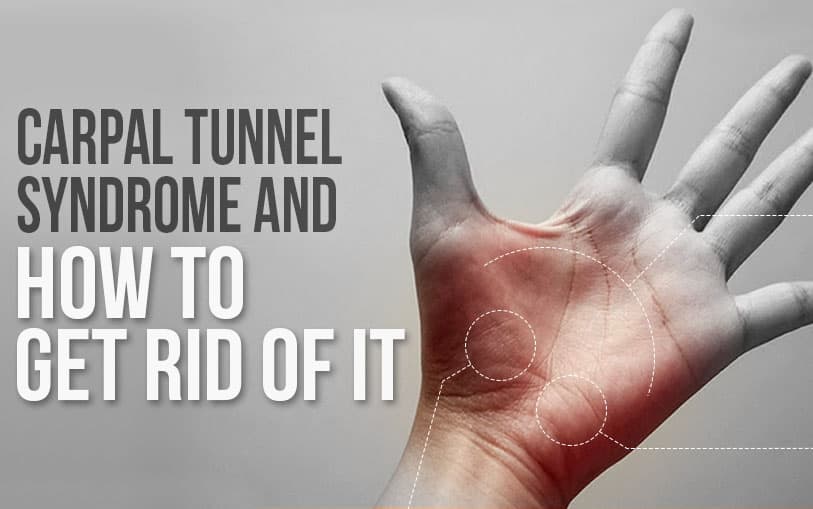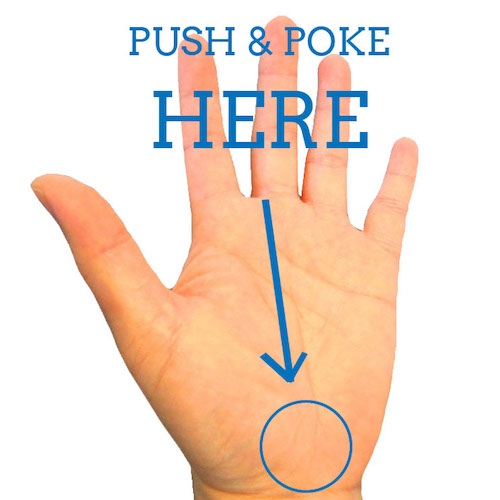

Carpal tunnel syndrome is a common condition that affects millions of people worldwide. It occurs when the median nerve, which runs from the forearm to the hand, becomes compressed at the wrist. This nerve is responsible for controlling sensations and muscle movements in the hand, and its compression often leads to pain, numbness, and weakness in the affected area. The carpal tunnel itself is a narrow passage surrounded by the carpal bones and ligament, serving as a conduit for the median nerve and tendons that control finger movement.
Although the exact cause of carpal tunnel syndrome is not always clear, certain risk factors and activities can contribute to its development. These may include repetitive hand or wrist movements, pregnancy, obesity, and conditions like diabetes or rheumatoid arthritis. Additionally, individuals with smaller carpal tunnels may be more susceptible to experiencing this syndrome.
There are several ways to alleviate the symptoms of carpal tunnel syndrome and potentially prevent its recurrence. Conservative treatments such as rest, ice, and anti-inflammatory medications can provide relief, while more severe cases may require physical therapy, splinting, or even surgery. It is essential to consult with a healthcare professional for accurate diagnosis and tailored treatment plans.
Anatomy of the Wrist

The wrist is a complex joint composed of several key elements. The carpal bones form the base of the wrist and are connected to the forearm bones, radius, and ulna. These bones provide stability and support for the hand’s wide range of motion.Covering the carpal bones is the carpal tunnel, a narrow, rigid passage formed by the transverse carpal ligament. Within this tunnel, both blood vessels and nerves pass through to supply the hand, with the median nerve being the most important. This nerve controls sensation and movement in the palm, thumb, and first three fingers
Carpal Tunnel Syndrome (CTS) occurs when the median nerve is compressed within the carpal tunnel, leading to numbness, tingling, and weakness in the hand and wrist. There are several factors that can contribute to the development of CTS:
Early diagnosis and treatment are essential for preventing long-term damage to the median nerve. Various treatment options are available, including:
These treatments aim to alleviate symptoms, reduce median nerve compression, and ultimately restore normal hand and wrist function.
To know more about CopperJoint wrist bands, click here.

Carpal tunnel syndrome is caused by compression of the median nerve in the wrist, leading to pain, numbness, and weakness in the affected hand. There are several factors that contribute to the development of this condition. In this section, we will discuss the role of pregnancy, work-related factors, and health conditions in carpal tunnel syndrome.
Pregnancy is a common cause of carpal tunnel syndrome due to the hormonal changes and fluid retention that occur during this time. These factors can lead to increased pressure within the carpal tunnel, causing the median nerve to become compressed. Typically, carpal tunnel symptoms manifest during the third trimester and often resolve after childbirth.
Certain work-related activities can increase the risk of developing carpal tunnel syndrome. Jobs that involve repetitive hand and wrist movements, such as:
may contribute to strain on the median nerve. Additionally, the use of vibrating tools or working in cold temperatures can exacerbate the condition. To prevent carpal tunnel syndrome, it is important to maintain proper ergonomics and take regular breaks from repetitive tasks.
Certain health conditions can increase the risk of carpal tunnel syndrome. These include:
By addressing underlying health issues and adopting preventative measures, individuals can reduce their risk of developing carpal tunnel syndrome.
Carpal tunnel syndrome typically presents with a range of symptoms affecting the hands and fingers. Pain and discomfort can be experienced in the thumb, index, middle, and ring fingers, along with the palm side of the hand. Some of the primary symptoms include:
The symptoms often develop gradually and tend to be most noticeable at night. This is because the wrist position during sleep can aggravate the compression of the median nerve in the carpal tunnel.
If left untreated, carpal tunnel syndrome can lead to several complications:

A doctor will begin diagnosing carpal tunnel syndrome by conducting a thorough physical examination. The examination focuses on the patient’s wrist and hand areas. They may test the affected wrist’s range of motion by checking for swelling and pressing on the median nerve, which can often result in tingling sensations or numbness in the fingers. Doctors may also be interested in evaluating the patient’s motor skills and overall coordination in their hands.
If a physical examination is inconclusive or if the doctor requires further information to confirm the diagnosis, they may order additional medical tests. Some common tests include:
These diagnostic measures help doctors accurately diagnose carpal tunnel syndrome and determine the best course of treatment for each individual patient.
Regular exercise can help alleviate the symptoms of carpal tunnel syndrome. Wrist exercises specifically target the affected area and promote flexibility. For instance, gentle stretches and strengthening exercises can be done throughout the day. It’s essential to take breaks during physical activity and avoid repetitive strain on the wrist.
Heat and cold therapy can also provide relief. Applying an ice pack to the wrist for 10-15 minutes can help reduce inflammation, while using a heating pad can aid in relaxation and increased blood flow. It is crucial to alternate between heat and cold applications appropriately.
Wearing a wrist splint can provide support and alleviate pressure on the median nerve. Splinting is most effective when worn at night, as it helps maintain the wrist in a neutral position, preventing further damage. Adjustable splints allow individuals to find the best fit for their wrists, ensuring optimal comfort and support. Regular breaks during the day and proper wrist alignment when typing or completing other tasks can enhance the effectiveness of splinting.
Modifying daily activities can help prevent and reduce the symptoms of carpal tunnel syndrome. Some ways to do this are:
Of late, compression attire has sought to leverage this by giving it the flexibility of being incorporated into clothing choices – compression socks, leggings, and wrist supports are not uncommon sights.

Carpal tunnel syndrome can often be managed with over-the-counter medications such as Ibuprofen, NSAIDs, and Aspirin. These help reduce inflammation and relieve mild to moderate symptoms. For more severe cases, health care providers may prescribe corticosteroids to decrease inflammation. Additionally, corticosteroid injections can be used to reduce swelling directly in the carpal tunnel area, providing temporary relief from symptoms.
Various therapy techniques can assist in alleviating carpal tunnel syndrome symptoms:
It is essential to consult with a health care provider to determine the most appropriate therapy option for an individual’s specific needs.
If conservative treatments are ineffective or the condition worsens, surgical intervention may be necessary. There are two main types of carpal tunnel surgery:
The choice between open and endoscopic surgery will depend on the severity of symptoms, patient preferences, and the surgeon’s expertise. Recovery times vary, but most patients experience significant improvement in carpal tunnel syndrome symptoms following surgery.
After carpal tunnel surgery, patients typically experience some swelling and discomfort in the affected hand and wrist. It is essential to keep the hand elevated to minimize swelling and follow the surgeon’s recommendations for managing pain. It may also be beneficial to wear a wrist brace to provide support during the recovery process.
Recovery time varies from person to person; some individuals may regain strength and range of motion in their hand as early as a few weeks post-surgery, while others may take several months. Engaging in gentle exercise and stretching can also help to speed up the recovery process and prevent stiffness. It is crucial to consult with a healthcare professional before starting any exercise regimen.
For most individuals, carpal tunnel surgery results in a significant improvement in symptoms; however, there are potential risks associated with the procedure. These risks might include infection, nerve damage, or even a recurrence of symptoms. Monitoring progress and maintaining open communication with healthcare providers is important to ensure a positive prognosis and address any complications promptly.
In some severe cases, patients may experience permanent nerve damage or lingering symptoms post-surgery. In such situations, long-term management strategies are necessary to maintain functionality and improve the quality of life. These strategies may include:
By following a comprehensive long-term management plan and staying diligent about addressing any issues that arise, most patients can expect successful recovery and relief from carpal tunnel syndrome.
Carpal tunnel syndrome is caused by pressure on the median nerve, which runs through the carpal tunnel in the wrist. This pressure can be due to numerous factors, including repetitive hand motions, wrist injuries, fluid retention, or health conditions such as diabetes and rheumatoid arthritis.
To alleviate carpal tunnel pain, try taking breaks from repetitive activities, stretching and strengthening exercises, wearing a wrist splint at night, and using over-the-counter pain relievers, such as nonsteroidal anti-inflammatory drugs (NSAIDs). If the pain persists, consult a healthcare professional.
The most effective treatments for carpal tunnel syndrome vary depending on the severity of the condition. Mild symptoms can be managed with self-care techniques, while more severe cases may require medical intervention. Treatments include wearing a wrist splint, nerve gliding exercises, corticosteroid injections, and, in some cases, surgery.
Self-care techniques for managing carpal tunnel syndrome include taking frequent breaks from repetitive activities, maintaining a neutral wrist position, using ergonomic devices, and performing stretching and strengthening exercises. Additionally, maintaining a healthy lifestyle with a balanced diet and regular exercise can help minimize the risk of developing carpal tunnel syndrome.
Carpal tunnel syndrome may improve or resolve on its own if the cause of the condition is addressed or if the individual makes necessary lifestyle changes. However, in some cases, medical intervention may be required to treat the condition and prevent long-term damage.
Medical devices that can help with carpal tunnel syndrome include wrist splints, which help maintain a neutral wrist position and alleviate pressure on the median nerve, and ergonomic devices that promote proper hand and wrist positioning when using a computer or performing repetitive tasks. A healthcare professional can offer guidance for choosing the appropriate medical devices based on individual needs and circumstances.
Carpal Tunnel Syndrome is a condition that affects many individuals, causing wrist pain and discomfort. While some people turn to unconventional remedies like magnetic bracelets and copper bracelets for relief, it’s essential to understand the science behind these options. Clinical trials have shown that the efficacy of such remedies often stems from the placebo effect, where individuals believe in their healing properties. Insulin pump like pain relief mechanisms may not be attributed to copper bracelets or magnetic fields. However, copper bracelets are praised for their compression benefits, which can potentially reduce wrist swelling and promote blood circulation in the human body. Additionally, compression gloves are designed to alleviate pain and provide support, offering a more plausible solution for carpal tunnel sufferers. It’s essential to be cautious of potential skin irritation when using these products and consult with a healthcare professional for personalized advice on managing Carpal Tunnel Syndrome effectively.